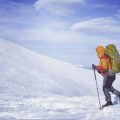1. What is Altitude Sickness?
Altitude sickness, also known as acute mountain sickness (AMS), is a condition that can affect anyone who travels to high elevations too quickly. It commonly impacts hikers and outdoor adventurers in places like the Rocky Mountains or Sierra Nevada, where the air gets thinner as you go higher. The main issue is that your body doesn’t get enough oxygen at these altitudes, leading to a range of symptoms that can spoil your adventure or even become dangerous if ignored.
Causes of Altitude Sickness
When you ascend to higher elevations, especially above 8,000 feet (about 2,400 meters), the air pressure drops and there’s less oxygen available. This sudden change makes it hard for your body to adjust, especially if you gain elevation rapidly without giving yourself time to acclimate. Factors like age, fitness level, or previous hiking experience don’t guarantee protection—anyone can get altitude sickness.
Common Symptoms
The symptoms of altitude sickness usually start within a few hours after arriving at a higher elevation. They range from mild discomfort to severe health issues. Here’s an easy-to-read table summarizing the most common signs:
| Symptom | Description |
|---|---|
| Headache | Dull or throbbing pain that doesn’t go away with usual remedies |
| Nausea & Vomiting | Feeling sick to your stomach, sometimes leading to vomiting |
| Fatigue | Unusual tiredness and weakness, even after resting |
| Dizziness | Sensation of spinning or feeling light-headed |
| Trouble Sleeping | Restlessness, waking up frequently, or trouble falling asleep |
| Loss of Appetite | No desire to eat or drink, which can make dehydration worse |
Effects on Hikers in the U.S.
If you’re planning a hike in popular American mountain destinations like Colorado’s Rockies or California’s Sierra Nevada, understanding altitude sickness is key for safety. Mild symptoms may just make you uncomfortable, but ignoring them can lead to more serious conditions like High Altitude Pulmonary Edema (HAPE) or High Altitude Cerebral Edema (HACE), both of which require immediate medical attention.
Quick Facts for American Hikers:
- You can start feeling symptoms as low as 8,000 feet (e.g., Denver sits at about 5,280 feet—just driving into the mountains can trigger AMS)
- No one is immune; even athletes and seasoned hikers can be affected
- The risk increases with faster ascents and higher elevations
- Taking time to acclimate and listening to your body are essential for a safe and enjoyable trip
2. Recognizing the Symptoms on the Trail
Understanding the Range of Altitude Sickness Symptoms
Altitude sickness, also known as Acute Mountain Sickness (AMS), can sneak up on even experienced hikers in the U.S., especially when climbing popular peaks like Mount Whitney or hiking in Colorado’s Rockies. Recognizing symptoms early is key to staying safe.
Mild to Severe Symptoms: What to Watch For
| Symptom Level | Common Signs | How They Might Appear During a Hike |
|---|---|---|
| Mild (AMS) | Headache, nausea, loss of appetite, fatigue, dizziness, trouble sleeping | You might feel sluggish, need more breaks, or have a hard time eating your trail snacks. Headaches are often dull and persistent. |
| Moderate | Worsening headache, vomiting, shortness of breath with exertion, increased fatigue, weakness | Pushing uphill feels much harder than usual; you may need to stop frequently to catch your breath. Nausea can make hydrating tough. |
| Severe (High Altitude Cerebral Edema/HACE or High Altitude Pulmonary Edema/HAPE) | Confusion, inability to walk straight (ataxia), severe shortness of breath at rest, chest tightness, cough (sometimes with frothy sputum) | Trouble walking a straight line or answering simple questions. Breathing feels labored even when sitting still. These are red flags for emergency descent. |
How to Distinguish Altitude Sickness from Other Common Hiking Issues
- Dehydration: Both dehydration and altitude sickness can cause headaches and tiredness. If drinking water doesn’t help or makes you feel nauseous, altitude may be the culprit.
- Overexertion: Feeling tired after pushing hard is normal, but if you’re unusually weak or dizzy compared to your usual hikes at lower elevations, suspect altitude effects.
- Heat exhaustion: Sweating heavily and feeling faint in hot weather is likely heat-related. Altitude sickness can happen even in cool temps and usually includes headache and nausea.
- Lack of sleep: While poor sleep can make you groggy, AMS sleep problems come with other symptoms like headache and appetite loss.
Tips for On-the-Trail Monitoring
- Pace yourself—if you notice any mild symptoms, slow down and take breaks.
- If symptoms persist or worsen despite rest and hydration, consider descending immediately.
- Always communicate how you’re feeling with your group—sometimes others will spot changes before you do.
- If severe symptoms show up (like confusion or trouble walking), it’s time to get down fast and seek medical help.

3. Risk Factors and Whos Most Vulnerable
Unique Challenges for American Hikers
Hiking in the United States comes with its own set of risks when it comes to altitude sickness. Many popular trails in U.S. national parks, like those in Colorado, California, and Wyoming, start at relatively high elevations. Unlike treks in other countries where gradual ascents are more common, American hikers often face rapid elevation gains—sometimes driving or hiking from sea level to 10,000 feet or higher within just a few hours. This quick change gives your body little time to adjust and increases the risk of altitude sickness.
Common Risk Factors for Altitude Sickness
Some people are more likely than others to get altitude sickness. Here’s a simple breakdown of key risk factors:
| Risk Factor | Why It Matters |
|---|---|
| Rapid Ascent | Quick climbs don’t give your body time to acclimatize, raising your risk. |
| No Previous High-Altitude Experience | If you haven’t hiked at elevation before, your body may react more strongly. |
| Personal Health Conditions | Issues like asthma, heart disease, or sleep apnea can increase vulnerability. |
| Poor Hydration or Nutrition | Lack of water and food makes symptoms worse and slows adjustment. |
| Age | Younger children and older adults sometimes have a tougher time adjusting. |
| Level of Fitness | Ironically, even fit people aren’t immune—anyone can be affected if they ascend too quickly. |
Health and Lifestyle Considerations for Americans
Your health plays a big role in how you handle altitude. Americans with chronic conditions should talk to their doctor before hiking at high elevations. Also, being used to lower altitudes (like living on the coasts or in the Midwest) means your body might need more time to adjust compared to someone who lives in Denver or Salt Lake City.
The Impact of Age and Fitness Level
While physical fitness is always a plus for hiking, it doesn’t guarantee protection from altitude sickness. Both young and older hikers can be vulnerable. Children may not recognize symptoms as easily, while seniors might have underlying health issues that make altitude changes harder on their bodies. Listening to your body and pacing yourself is key for everyone, no matter how fit you are.
4. Prevention and Safe Acclimatization
Gradual Ascent: Take It Slow and Steady
When hiking at high elevations in the U.S., one of the best ways to prevent altitude sickness is by taking your time as you climb. American national parks and popular trails often have well-marked elevation gains, so use these markers to pace yourself. Aim to gain no more than 1,000 feet (about 300 meters) of elevation per day once you’re above 8,000 feet (2,400 meters). If possible, include a rest day every 3,000 feet (about 900 meters) gained.
Sample Ascent Plan for Hikers
| Day | Starting Elevation | Elevation Gained | Recommended Activity |
|---|---|---|---|
| 1 | 6,000 ft | +1,000 ft | Hike to base camp, easy pace |
| 2 | 7,000 ft | +1,000 ft | Continue ascent, monitor symptoms |
| 3 | 8,000 ft | – | Rest and acclimatize at this level |
| 4 | 8,000 ft | +1,000 ft | Proceed if feeling well |
Hydration: Drink Up!
The dry air and increased breathing rate at higher altitudes mean you lose fluids faster than at sea level. Carry a reusable water bottle or hydration bladder and aim to drink about 3-4 liters (roughly a gallon) of water per day. Watch out for signs of dehydration such as dark urine or dry mouth. Many American hikers use electrolyte tablets or sports drinks to maintain their salt balance.
Nutrition Tips: Fueling Your Adventure
Your body burns more calories at higher elevations. Pack energy-rich snacks like trail mix, jerky, granola bars, and peanut butter sandwiches—classic favorites among U.S. hikers. Try to eat small meals regularly throughout the day rather than relying on big meals at night.
Popular High-Altitude Snacks in the U.S.
| Snack Type | Description/Benefit |
|---|---|
| Trail Mix | Nuts and dried fruits provide protein and quick carbs. |
| Jerky (Beef/Turkey) | Packed with protein and easy to carry. |
| Granola Bars/Energy Bars | Sugar and fiber help maintain energy levels. |
| Tortilla Wraps with Nut Butter | A filling source of healthy fat and calories. |
| Dried Fruit Packs | Naturally sweet and lightweight for on-the-go snacking. |
Using Local Resources: Ranger Stations & Trail Guides
The U.S. National Park Service and Forest Service ranger stations are valuable resources for all hikers—especially those new to altitude. Stop by before your trek for the latest trail conditions, weather updates, and advice specific to your route. Many American hiking communities also share up-to-date trail guides online or in print; these often include tips from locals about where to acclimate safely or where water sources are located along the trail.
Quick Tips from American Rangers:
- If you start feeling symptoms of altitude sickness (headache, nausea), stop ascending immediately and rest.
- Campsites designated for acclimatization are often marked—use them whenever available.
- If severe symptoms develop (confusion, shortness of breath at rest), descend right away and seek help.
- Carry an emergency communication device when hiking in remote areas; many U.S. trails may not have cell service.
- Let someone know your planned route before you leave home or the trailhead.
This practical approach helps American hikers enjoy the mountains safely while minimizing risk from altitude sickness through smart preparation and local know-how.
5. Treatment, Emergency Responses, and When to Turn Back
Step-by-Step Advice for Treating Altitude Sickness in the Field
If you or someone in your hiking group starts showing symptoms of altitude sickness, quick action can make all the difference. Here’s what to do:
Step 1: Stop and Assess
- Pause your hike immediately if you notice headaches, nausea, dizziness, or fatigue.
- Check in with everyone in your group—sometimes people downplay their symptoms.
Step 2: Rest and Hydrate
- Sit down and take a break. Encourage slow, deep breaths.
- Drink water or an electrolyte drink. Avoid alcohol and caffeine.
Step 3: Descend if Symptoms Persist
- If symptoms don’t improve after resting for 30-60 minutes, descend at least 1,000 feet (300 meters) as soon as possible. Even small descents can help.
Step 4: Administer Medication (If Available)
- If you have acetazolamide (Diamox), it can help with mild symptoms. Always consult your doctor before your trip about medication use.
- Pain relievers like ibuprofen can ease headaches but won’t cure altitude sickness.
When to Seek Medical Assistance or Call for Help
Altitude sickness can escalate quickly into life-threatening conditions like High Altitude Pulmonary Edema (HAPE) or High Altitude Cerebral Edema (HACE). Here’s how to tell when it’s time to get help:
| Symptom/Sign | Action Needed |
|---|---|
| Severe shortness of breath at rest | Descend immediately; call for emergency help if possible |
| Coughing up pink, frothy sputum | This is a sign of HAPE—descend and seek medical help ASAP |
| Loss of coordination, confusion, inability to walk straight | This is a sign of HACE—descend right away and call for rescue if available |
| Person becomes unresponsive or unconscious | This is a critical emergency—descend as fast as safely possible and activate emergency services (911 or park rangers) |
| Mild headache that doesn’t improve with rest or medication | Monitor closely; consider descent if no improvement within a few hours |
Stories from U.S. Hikers: Knowing When to Turn Back
Many experienced American hikers emphasize that listening to your body—and each other—is more important than reaching the summit. For example, Sarah from Colorado recalls her hike up Mount Elbert: “I started feeling dizzy and nauseous above tree line. My friends wanted to push on, but I insisted we turn back. By the time we got lower, I felt much better. Looking back, I know turning around was the safest choice.” Another hiker, James from California, shares: “I saw someone ignore their symptoms on Mount Whitney and end up needing helicopter evacuation. Never let summit fever cloud your judgment.” These stories highlight why being prepared to turn back can save lives.
Quick Tips: When in Doubt, Go Down!
- If you’re unsure whether it’s safe to continue, always choose caution and descend.
- No summit is worth risking your health or safety.
- Let someone know your hiking plans before you go; carry a satellite communicator or personal locator beacon where cell service is limited.
Recognizing when to treat in the field versus when to call for help—and understanding that turning back isn’t failure—are essential skills for every American hiker heading into high-altitude terrain.


